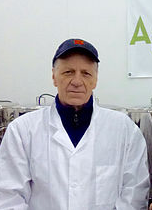WHAT IS FULVIC ACID?
Fulvic acids are nature created micronutrient transformation and transportation system. It is naturally produced in healthy soils by beneficial microbes as organic material is broken down. Fulvic acids starts its journey in the soil that will take it and the micronutrients and charges it, carries throughout the biosphere to support life everywhere it goes – to plants, to animals, to human beings. In the soil, the first task of fulvic acids is to transform inorganic mineral rocks and mineral metals into their activated, water-soluble, “cell-ready” micronutrient form of fulvic minerals – the only micronutrient form plants can use and the only form we can use too. Fulvic acids transport these micronutrients out of the soil into the plant and delivers them to the plant cells where they are needed in just about every metabolic process.
Only in the last decade or so have we even understood how fulvic acids work. We now talk of an auxin-like response, not really knowing what causes it. It was never realized how effective fulvic acids were at very low application rates and how much soil change it can effect in a short time. Stimulation of biomass production at the bottom of the food chain is a part of the benefit of bioactive fulvic acids.
Fulvis acids also works on a cellular level to provide faster cell division due to increased ATP production. Cell function is enhanced or normalized at the level of the mitochondria. Targeted molecular modulation, activation of growth regulator pathways, translocation in the nucleus and regulation of diverse genes providing enhanced stress response and growth. Activation of transforming growth factor beta pathway as well as P38 MAPK signaling that provides pathogen resistance. These acts come from the action of polyphenols, one of several organic functional groups contained in the fulvic acids.
ORIGIN AND QUALITY
Company Terra Aurum LLC is the European distributor of Mineral Logic LLC, the US company who owns one of the few known plant-matter and mineral deposits of its type in the United States. This shale deposit, created during the Lower Oligocene epoch is unique, since it’s protected by a layer of iron ore and contains a rich vein of bioactive fulvic acid and trace minerals.
The mature BioActive fulvic acid products sold by by Terra Aurum Ltd are certifiably different from competing products, which may use a peat or sugar fermentation process to create first generation fulvic acid or which may be from a coal derivative. First generation products do not contain the same levels of the naturally-occurring complex of constituents that we harvest.
When viewed under a microscope, shale mined from our deposit shows distinct crystal formations. The crystals of acid-alkaline compounds were formed 23 to 34 million years ago* from the combination of freshwater and oceanic life that covered the area. Enormous prehistoric plants grew with roots that reached deep into the earth to take up an abundance of minerals chelated by fulvic acids. The earth was rich with microbial activity, creating mature fulvic acid molecules that are too complex to be synthesized by commercial chemical processes.
* The Lower Oligocene is a geologic epoch of the Paleogene Period and extends from about 33.9 million to 23 million years before the present. The Rupelian is the older of two ages or the lower of two stages of the Oligocene epoch/series
QUALIFYING CHARACTERISTCS
 “Our fulvic acid is a rigorously tested, stringently manufactured, verifiable product. We use both the V&B and the Vanillian Catechin Conjugate methods for a complete picture of the fulvic spectrum..”
“Our fulvic acid is a rigorously tested, stringently manufactured, verifiable product. We use both the V&B and the Vanillian Catechin Conjugate methods for a complete picture of the fulvic spectrum..”
Ralf Ostertag • Chief Science Officer
Before purchasing fulvic acid, you should look at basic product information – similar to the information provided for high-grade agricultural nutrients. At present, there isn’t one standardized analytical method for testing fulvic acid concentration in a solution. Consequently, we use two separate methods to measure fulvic acid concentration, the Verpleugh and Branifold (V & B) and the Modified LG Butler (Vanillian Catechin Conjugate) methods.
Questions to ask:
- Does the seller pay for frequent chemical analysis of its products by an independent laboratory?
- Will I be provided with a complete analysis including both free-form fulvic acids and acid-bound or fulvates?
- Does the seller provide a Certificate of Analysis?
Some companies claim that their fulvic is USDA Organic certified. The USDA does not certify minerals as organic, although they are considered bioactive.
BIOACTIVE CONTENT
Naturally anti-microbial, anti-bacterial, anti-fungal. Safe for all feed systems.
A mature fulvic source product should contain more than 70 trace elements and minerals and as many electrolytes, naturally occurring amino acids, vitamins and organic acids. Our product has a natural pH of 3.3 – 3.6, which requires no preservatives.
The pH should be around 3.3 after extraction. Producers who claim a neutral pH of 7 may have used potassium hydroxide or sodium hydroxide in the extraction process. These forms of fulvic are considered synthetic by the USDA and U.S. FDA, since they were chemically extracted. A quick look at their lab analyses shows a high potassium or sodium level, which indicates that one of these chemical extractants was used.
